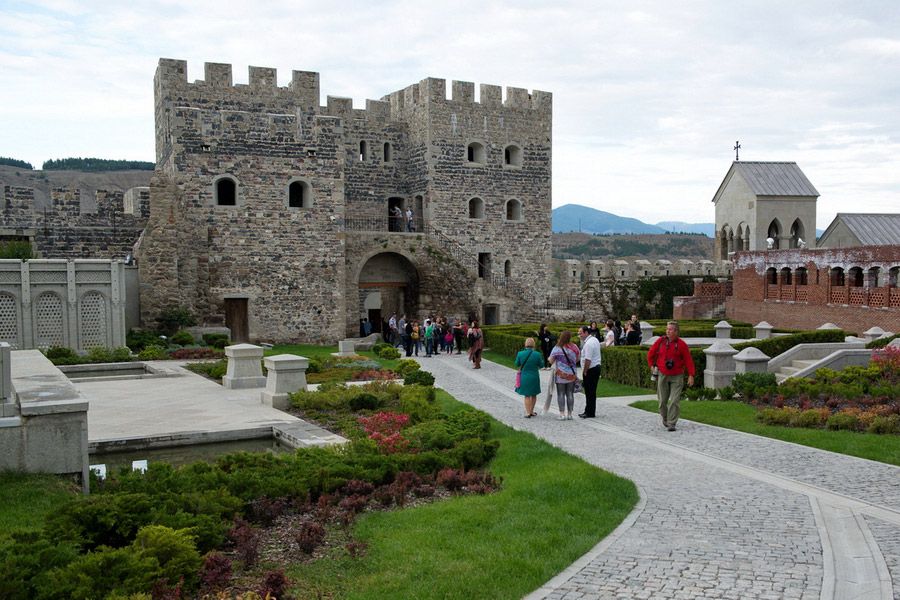Rabati Fortress, Akhaltsikhe
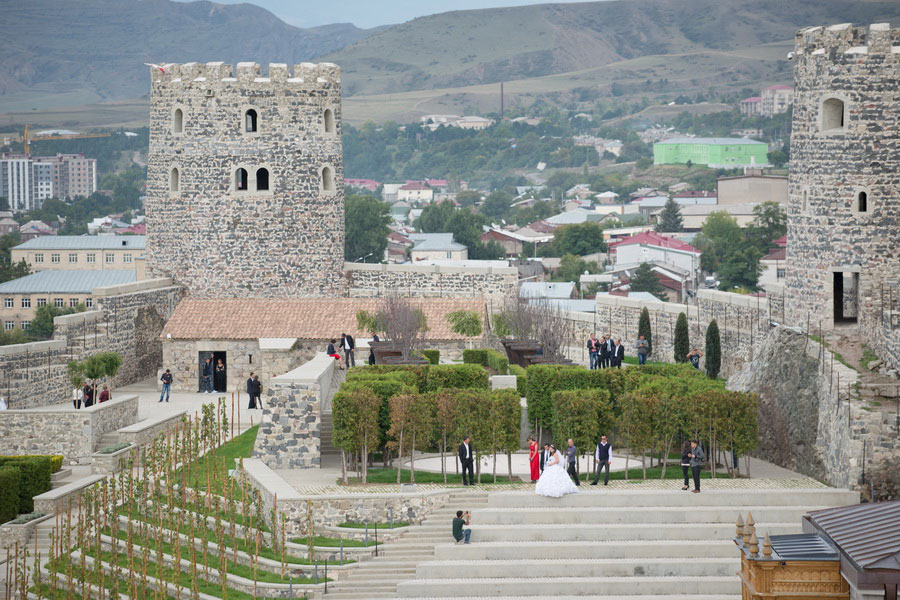
Opening hours: 10:00-18:00
No day off
The old stone Rabati fortress, the main sight of the Akhaltsikhe town, is standing on the small hill on the very shores of the Potskhovi river. Its name comes from Arabic meaning “fortified place”. It is located on the western suburbs and can be seen practically from anywhere in the city. This military building erected in the 13th century had witnessed a lot over the centuries. The fortress had been destroyed several times, was often in a siege, as a result of which had absorbed tracks of different cultures and religions. In 2012 there was held a large reconstruction after which Rabati fortress in Akhaltsikhe turned into a town within the town. It has become not only a historical monument, but a real cultural city centre. There is a church, mosque, synagogue, small park, History Museum, various shops, hotels and even civil registry office inside the fortress walls.
The history of Rabati fortress goes back into the centuries and no one can definitely say when the first fortification appeared. It is known that in the 12th century Djakeli prince’s family had built here the first real fortress and it had turned into their residence for 300 years. What is interesting is that when they had erected the fortress, it had a name of “Akhaltsikhe” that is translated as “new fortress”. So the city that stretched at its walls has preserved this name up to our days.
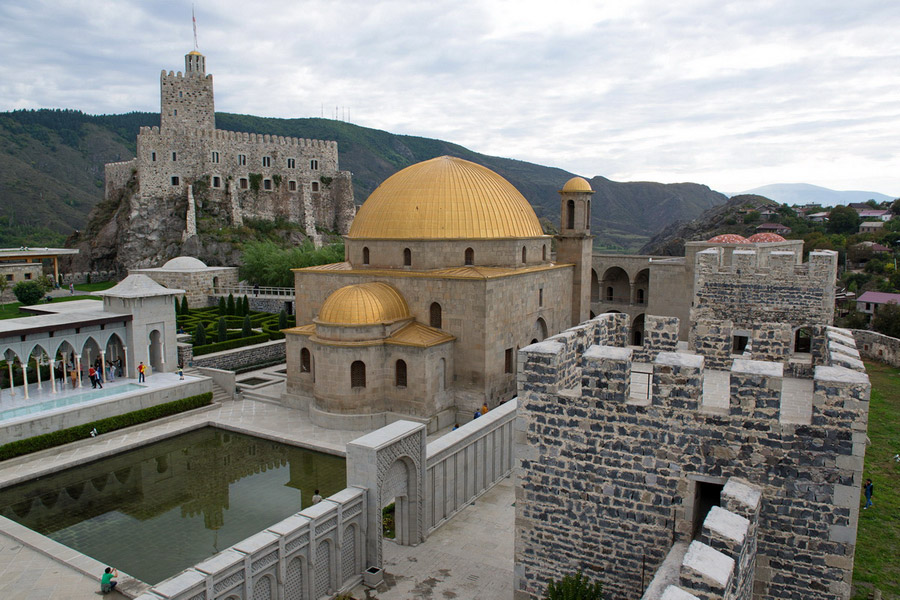
In 1393 Rabati fortress was destroyed by the army of Tamerlane who was taking his troops from conquered Iran towards the lands of the Golden Horde at the shores of the Caspian Sea. The town and the fortress had been restored but 100 years later, in 1486 Akhaltsikhe was a subject to destruction by a Mongol khan Jakub. Though strategic importance and convenient trading routes helped the town to revive.
In 1578 Akhaltsikhe was occupied by the army of the Ottoman Empire. They rebuilt and fortified the fortress, and the name “Rabati” had gradually spread out. In Arabic it means a region adjoining the fortress and surrounded by an additional protection wall. But here it had acquired the meaning of the fortress itself.
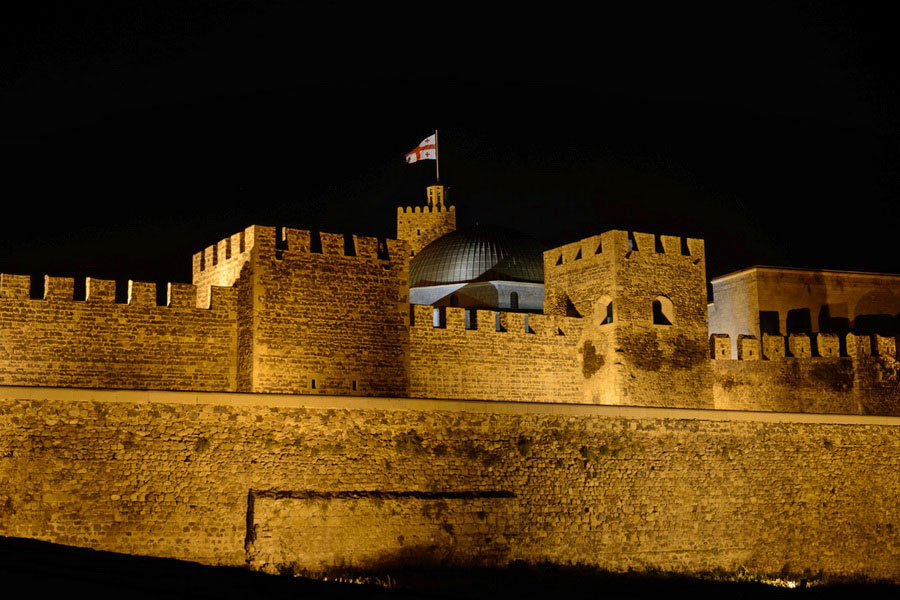
In 1810 Rabati fortress was seized by Russian troops but this was an unsuccessful attempt. Only in year 1828 during the Russian-Turkish war, united forces of the Russian Empire and Georgia had seized it with a fierce assault. This event had been depicted on the painting work of a Russian artist Sukhodolsky “Assault of the Akhaltskikh fortress on 15 August 1828”. Later Ottoman Empire made several attempts to return the control over this strategic object, but they all ended up unsuccessfully.
After peace had been established here, Rabati fortress had lost its strategic importance and began to go into ruins. In the 20th century fortified walls of this outpost were not actual and due to tense relations between USSR and Turkey this region had become closed and unpopular. And only after the fall of USSR, the interest towards Akhaltsikhe and its main sight raised again. In 2011 massive restoration of the Rabati fortress began and in August 2012 it was opened and the list of interesting spots on the touristic map of Georgia has extended by one more historic pearl.
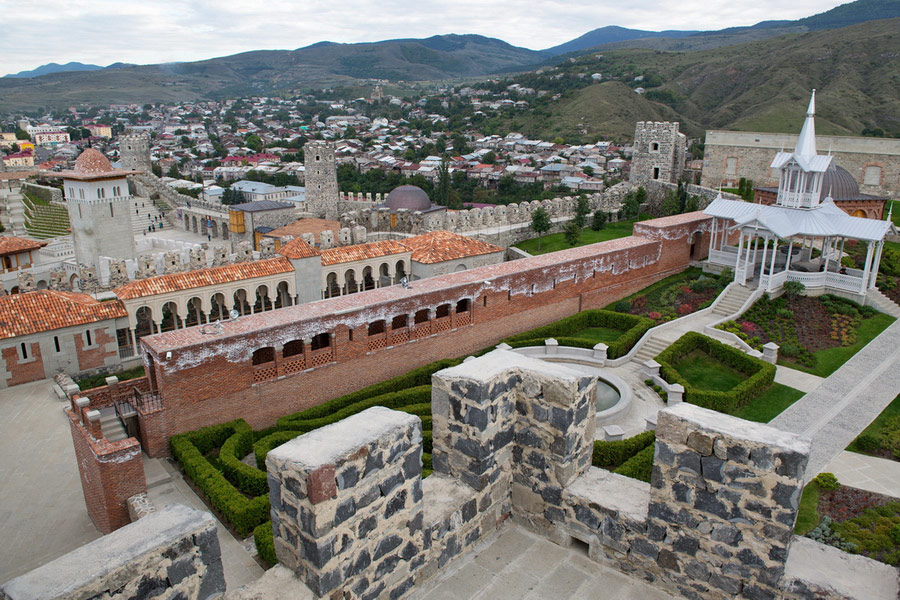
Today Rabati fortress is a genuine cultural and historical complex on the square of seven hectares. The territory of the fortress is divided into a lower modern part and upper historical one. The lower part has shops, cafes, restaurant and a hotel. The upper part comprises of Akhmediye mosque (18th century), an Orthodox church (19th century), Djakeli palace, and the History Museum. The museum exposition presents an ancient history of Southern Georgia: stone items of the Neolithic Age, bronze axes found in these lands, items related to the primitive society and other artifacts. It is prohibited to take pictures in the museum.
Apart from this, the Rabati fortress has excellent viewing sites: there are four towers above the walls, where you can go up the winding stairs. Each of them has a wonderful view of Akhaltsikhe and its surroundings, and one can imagine being a guard watching an upcoming enemy. But if this does seem not enough, then you can get to the citadel roof in the western part of the fortress where you get the best ever view.
